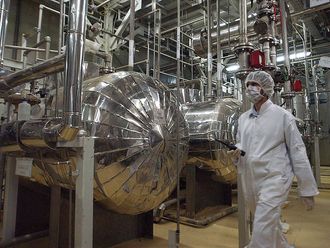
Damascus: The Arab defeat in 1967 has scarred the psyche of an entire generation of Syrians, especially after Israeli forces seized the Golan Heights.
The fallout from the war carved deep into the structure of the Baathist state and triggering massive political developments.
Two trends emerged within the ruling party, a realist and leftist one.
The first was focused on recapturing what the Israelis took in 1967, through a “War of Attrition”.
The second revolved around one skewed idea: “Syria can live without the Golan for now. What’s important is that the state survived and so did the Baath Revolution.”
Immediately after the war, the Syrian Government invited 800 Soviet experts to Damascus to rebuild what was destroyed by the Israelis — paving the way for a Syrian-Soviet relationship that lasted until the present war in Syria.
Within the upper echelons of power in Damascus, accusations were traded back and forth between two wings of the Baath Party.
The first was headed by leftist military strongman Salah Jadid and civilian president Nour Al Deen Atasi; the second by defence minister Hafez Al Assad and chief of staff Mustafa Tlass.
Speaking to Gulf News, General Tlass (aged 85) said: “Cursed was the war of 1967. The army was unprepared and too busy with politics, explaining why chaos broke out on the war front. The military commands were more interested in blaming each other than in defending the country.”
In November 1970, Al Assad and Tlass staged a coup, arresting their rivals at the notorious Mezzeh Prison. It was called a “Correction Movement” aimed at “correcting” wrongs in the Baath Party and in the balance of power between Syria and Israel. For the next 30 years, Al Assad built his entire legacy on trying to restore the occupied Golan, but to no avail.
In 1991, he entered into peace talks with the Israelis, launched at Madrid, demanding full restoration of the Golan in exchange for normalisation with the Jewish state. The benchmark, he said, were the borders of June 5, 1967.












